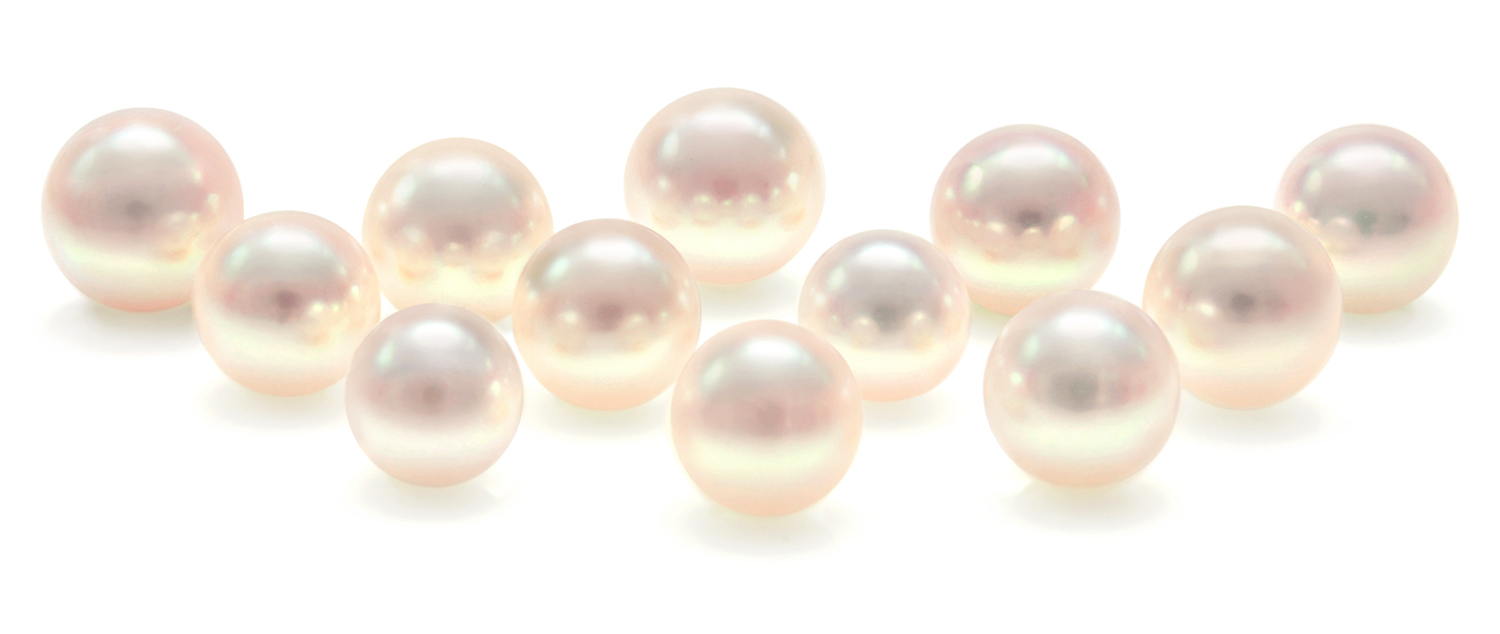Akoya pearls are remarkable for their consistent sizes and shapes. They are most ideal for use in well matched or graduated strands.

The cultivation of spherical Akoya pearls was originally discovered by William Saville-Kent in Western Austarlia more than 100 years ago. The insertion techniques were later patented by Dr. Tokishi Nishikawa of Japan and subsequently developed and used by Kokichi Mikimoto over the last century. These same techniques for nucleus insertion are still used today.
Pearl producers cultivate Akoya pearls in a bivalve mollusk of the Pinctada genus. The primary species used in cultivation are the Pinctada fucata and the Pinctada chemnizti. The Pinctada fucata is native to the coastal waters of Japan, while the Pinctada chemnitzi is more prolific in Vietnam and along the coast of China. Today, most Akoya pearl producers in both China and Japan cultivate with a hybridization of the two species.
Akoya pearls typically range in size from 2 to 11 mm, while the most common sizes fall between 7 and 9 mm. These sizes are small enough for daily wear and look proportionate on most women. The pearls are valued primarily for their size, shape, luster, color, and surface nacre. Larger sizes with pink hues or overtones are considered to be the most valuable and small increases in diameter can increase valuations substantially. The quality and thickness of the nacre is reflected in the luster which along with the color are the most important factors affecting the beauty. A smooth surface free of any blemishes is always desirable but uncommon in normal culturing.
Akoya pearls predominately exhibit white body color with rose, silver, or cream overtones. A rose overtone can range from pale pink to deeper, more saturated hues. This overtone deepens and enhances the pearl’s luster. Pairing these pearls with yellow gold will maximize this effect, making the pearls appear highly lustrous.
Silver overtones may also contain undertones of green or blue, giving the pearls an ethereal look. This overtone works equally well with both yellow and white gold and is best suited for women with dark hair and tan or olive complexions. The contrasting colors will make these pearls appear even larger to the eye.
A cream overtone, like rose, enhances and deepens the pearl’s luster and the effect can be maximized by pairing the pearls with yellow gold. The finest cream overtones display flashes of violet, combining pink and blue to dazzling effect.
All trademarks and logos shown herein are the property of their respective owners. © Copyright Multicolour Gems Ltd, 1998-2001. All rights reserved. Use of this site constitutes acceptance of Multicolour Return Policy, Privacy Policy and Trading Guarantee. Multicolour.com headquarters at # 59 Soi Pradit, Silom Soi 20, Bangkok, 10500, Kingdom of Thailand, Tel: +66 2 233-2108, Fax: +66 2 236-5274, E-mail to info@multicolour.com. Lost? Check Site Map. Site design and maintenance by NetComposite ®.
|